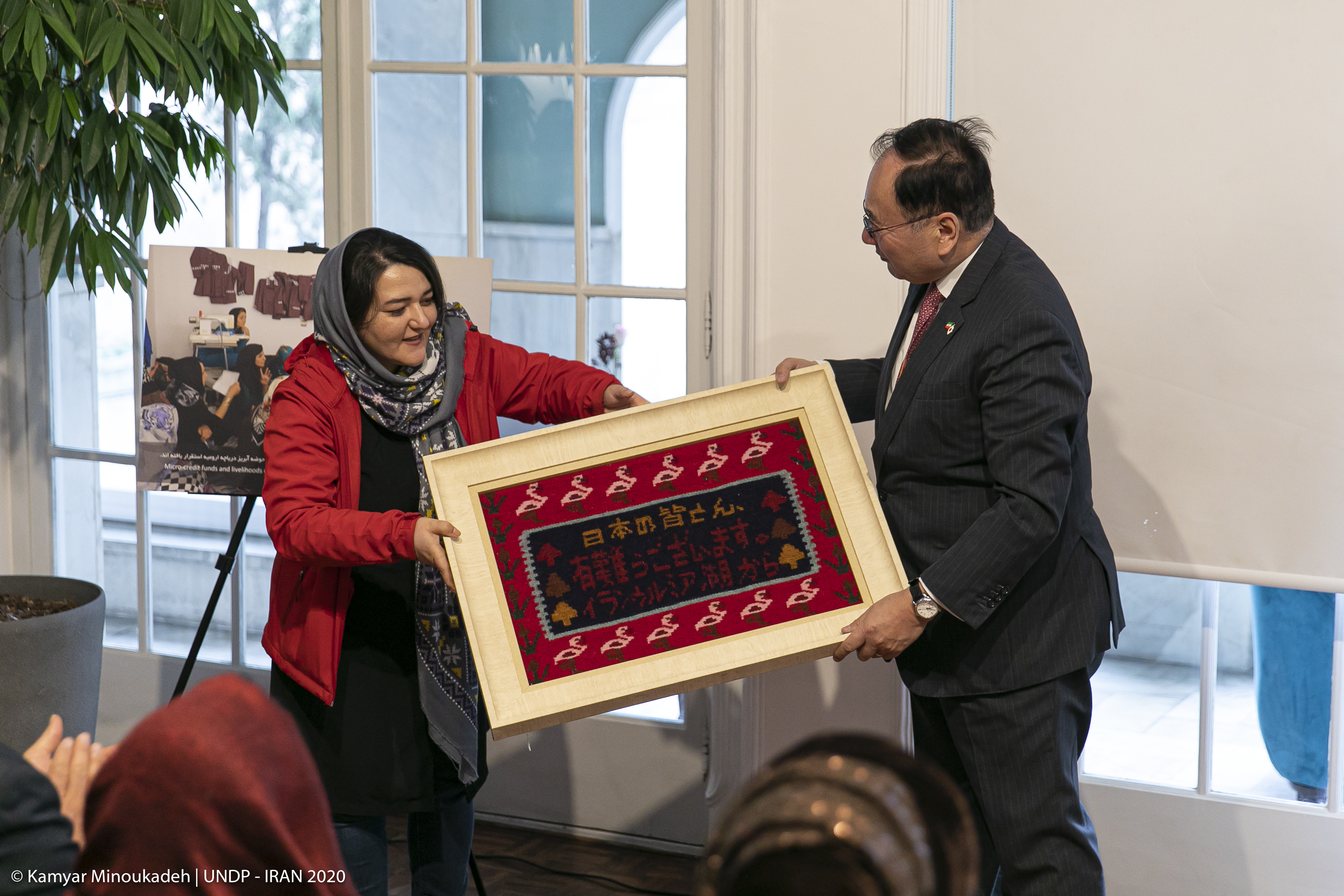A local community member from Urmia presenting a thank you gift to the Ambassador of Japan in Iran, H.E. Mr. Mitsugu Saito
Click here to read the story in Farsi.
The Government of Japan has generously contributed US$ 1 million to continue to support conservation and restoration efforts of the Lake Urmia basin through the United Nations Development Programme (UNDP) Iran. This is Japan’s seventh contribution to UNDP Iran.
The contribution will be implemented as a component of UNDP’s ongoing Conservation of Iranian Wetlands Project – a joint project between Iran’s Department of Environment and UNDP.
The following are some of the achievements of the project during the previous phases:
- 12,000 local communities and farmers around the Lake Urmia basin have been trained
- Reduction of water use by 25% and increasing irrigation efficiency by almost 42%
- Generating job opportunities for 250 local experts
- Collaborating with 42 local companies and NGOs
- Creating green jobs for more than 750 women in the villages, through establishment of Micro-Credit Fund
The seventh phase of the project focuses on people and livelihoods, a critical link to sustainable environment. Community participation in restoration of the lake through sustainable and water management and biodiversity conservation draws on the capacities and the lessons learnt during the implementation of the previous phases, contributing effectively to the sustainability of Lake Urmia activities. An innovative feature has been introducing sustainable agriculture techniques across new pilots in the Lake Urmia basin, such as the use of organic pest control and water saving methods for irrigation.
The project aims at better application of sustainability models in Lake Urmia and its adjacent wetlands, promoting local participation in 170 villages around the lake basin as well as enhancing the livelihoods and resilience of local communities through a more integrated approach.
As a result of the collective efforts of the Government, International Organizations and the local communities and NGOs, Lake Urmia is currently restoring to a stable status, with a level of 1,271.68 meters above the sea and an area of 3,080 square kilometers.

 Locations
Locations



